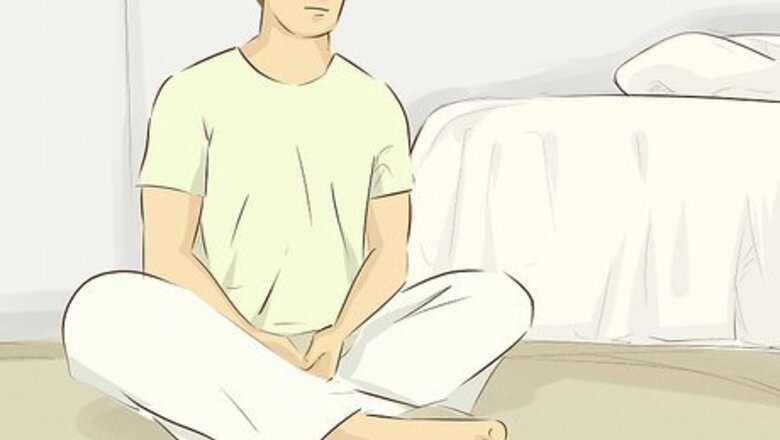
views
X
Research source
Focusing on Your Object
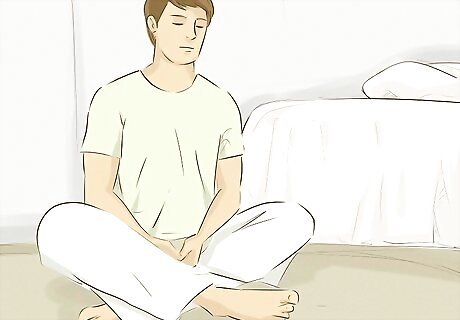
Move to a comfortable position. You may think that you need to be seated in the standard cross-legged posture to meditate, but it's more important that you're in a position where you feel comfortable and supported. You don't want your position to distract you, so sit in a comfortable chair or leaning against the wall if the cross-legged lotus position is a struggle. You also can do dhyana while lying down – just make sure you don't fall asleep.

Relax your muscles incrementally. Yoga practice prepares your body to relax for dhyana meditation. Starting with your feet, gradually release tension in your muscles going all the way up to the crown of your head. Breathe deeply and adjust your body as necessary to accommodate your relaxed muscles. If you're holding tension anywhere, focus on that part of your body and try to release that tension before you continue further.

Turn your mind to your breathing. Once your body is relaxed, begin meditation by focusing on your breath. Clear your mind of all other thoughts and think only of your breathing. Breathe deeply and slowly in through your nose and out through your mouth. Think of filling your lungs from the bottom to the top, then pause for a moment before slowly emptying your lungs from the top to the bottom. Continue breathing like this for 10 to 20 breath cycles, keeping your mind focused on your breath. If other thoughts intrude, acknowledge the thought and then let it go, gently pulling your mind back to your breath.

Choose an object or other point of focus. To do dhyana, you need an object or image that you can use as the focus of your meditation. It could be an image of a deity, something in nature, or an object that symbolizes something or someone important to you. The object you choose isn't particularly important, but it should be something that has meaning for you personally and that you want to connect with. You may want to use a physical object that you can hold in your hands or set in front of you, especially if you're just starting out.
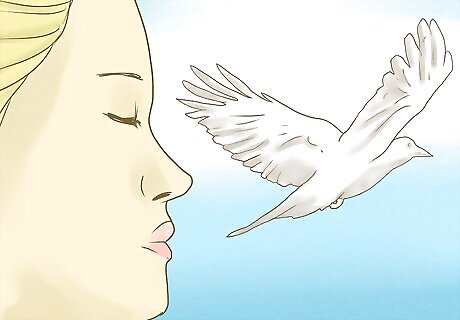
Observe your object in a detached way. Maintaining your deep breaths, stare at your object. If you aren't using a physical prop, hold your object in the center of your mind until it becomes the only thing you're thinking about. Unless you have a physical object to look at, closing your eyes may make it easier for you to focus. For example, suppose you have chosen a small statue of a lion as your object. You might observe the material the statue is made out of or the lion's facial expression. Observe these things as they are without attachment or judgement. Make it as simple as possible. If your object is nature, you might think about the colors of grass and sky and water.
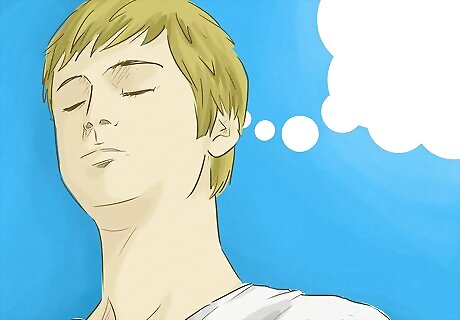
Try to become one with the object. The ultimate goal of dhyana is to lose any separation between you and your object of focus. Continue your observation in a detached way until you find that you are no longer thinking about the process of observation. Getting to this point takes a lot of practice, so don't get discouraged if you find that you can't reach this point at first.
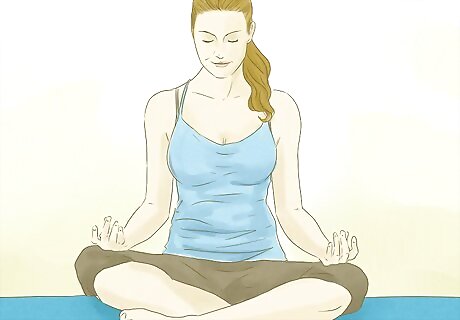
Practice for 5 to 10 minutes when you're starting out. When you first start dhyana, you likely won't be able to meditate in this state for very long before your mind starts to wander. Start slow, and gradually work your way up to longer periods of time. Controlling the mind is a big part of dhyana practice. The more often you do it, the more control you'll have and the longer you'll be able to meditate. Make your dhyana practice a part of your daily routine.

Increase your practice time gradually. Every week or so, add 5 or 10 minutes to the amount of time you remain in a meditative state. Set a goal of 30 minutes. Feel free to continue using shorter periods of time if you find it difficult to control your mind. Don't get discouraged if you feel like you aren't progressing. Look at what is holding you back and try to make changes that help you meditate for longer. You may want to set a gentle, soothing alarm to notify you that it's time to end your practice.
Relaxing Your Body

Warm up with mountain pose. Mountain pose helps you to ground yourself and center your mind, making it a good warm up to a yoga practice. To get into mountain pose, stand toward the front of your mat with your hands by your sides. Put your feet together with the outsides of your big toes touching. Focus on distributing your weight evenly across all four corners of your feet. Breathe deeply in through your nose and out through your mouth. On an inhale, raise your arms straight over your head, sweeping them out from your sides. Then exhale and lower them back to your sides. Repeat this motion for 5 to 10 breath cycles.

Step back into high lunge. On an inhale, step your right foot behind you so that your left knee is bent at a right angle. Your left thigh should be roughly parallel to the floor. Your left knee should be directly over your left ankle. Find your balance, keeping both legs active. Press your left foot and your right toes firmly into the floor. Reach your arms directly overhead. Stand tall, keeping your back neutral and your shoulders down and back. Hold this pose for 2 or 3 breath cycles, breathing deeply.
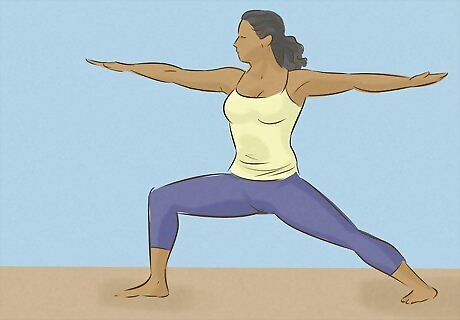
Open into warrior II. From high lunge, lower your arms and turn your right foot to the side so that your left heel points toward the middle of your right foot. Engage your core and turn your torso to face in the same direction as your right toes. Keep your spine straight and your shoulders directly over your hips. Extend your arms out from your shoulders with your palms facing the floor. Hold this pose for 2 or 3 breath cycles.

Transition into reverse warrior. Keep your legs in the same position and lower your right arm down to your right leg. You can rest your hand along the side of your calf, but don't lean on it. Lift your left arm up towards the sky. You can create a flow between reverse warrior and warrior II if you have a little more time to commit to your yoga practice before you do dhyana. On an inhale, return to warrior II, then exhale into reverse warrior. Repeat this flow for 3 to 5 breath cycles with a breath for each movement.
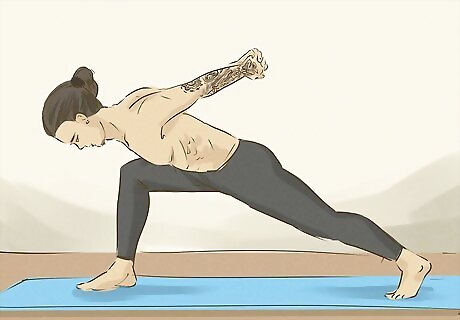
Fold over into humble warrior. For this variation of the humble warrior, keep your lower body in the same position as for warrior II and reverse warrior. Interlace your fingers behind your back with your arms extended. On an exhale, slowly fold your torso forward until your left shoulder is resting on the inside of your left knee. Reach your arms overhead to open and expand your chest, breathing deeply.

Step back to downward facing dog. From humble warrior, lift your torso and open your arms to return to warrior II. Then turn your right toes forward so that you're back in the high lunge position before stepping your left foot back in line with your right. On an exhale, fold your torso forward. You can come down into a plank position or come down onto all fours, whichever feels better for you. Press your palms into the mat, spreading your fingers wide. As you inhale, lift your hips up to the ceiling, pressing your palms and toes firmly into the mat. Your body will be in an upside-down "V" shape. Engage your core and breathe deeply, lifting up from your wrists as you press down through your heels. Make sure your shoulders are rolled back and not crunched around your ears.
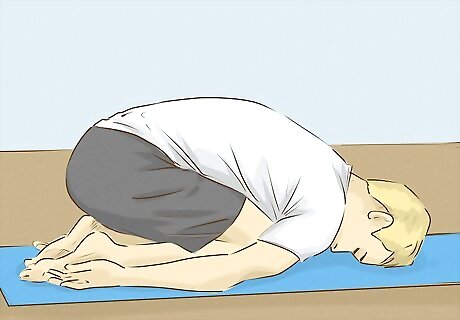
Lower to child's pose. From downward-facing dog, lower your hips and bend your knees, folding your torso over your legs as you come back down to the mat. Roll over your toes so that you're kneeling with your shins against the mat. Rest your forehead on the mat if it's comfortable. If you're not that flexible, you might want to get a rolled blanket or a yoga block that you can rest your head on so you're supported and relaxed. Stay in this position for 5 to 10 breath cycles, or as long as you feel comfortable. Breathe deeply and allow your body to relax.
Troubleshooting Your Dhyana Practice
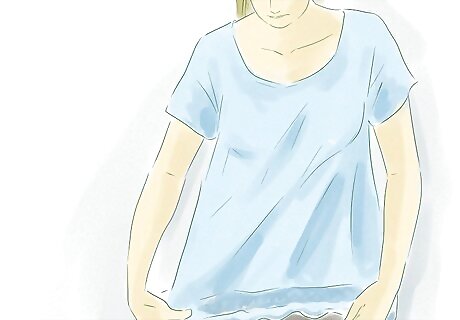
Check your clothing. Restrictive clothing can cause distractions and make it difficult to focus your mind during meditation. Make sure whatever you're wearing is loose and comfortable and doesn't pinch or bind you anywhere. It's a good idea to take off your shoes, as well as your belt and any jewelry you might be wearing. All these things can be distracting to meditation.

Wait three hours after a meal. The digestive process can be distracting and cause discomfort. For this reason, dhyana is best practiced on an empty stomach. Three hours gives your body the time to digest whatever you consumed. You also want to make sure you're well-hydrated. Drink plenty of water an hour or two before you start your practice, and get some more water afterward.

Turn off notifications and other disturbances. Generally, you want to meditate in a place that is free from external sounds that can disrupt your focus. Turn off all electronic devices or put them in a different room so you won't be distracted if they buzz or light up. If you're setting an alarm on your phone to signal the end of your meditation, make sure your phone isn't going to make any other sounds while you're meditating.
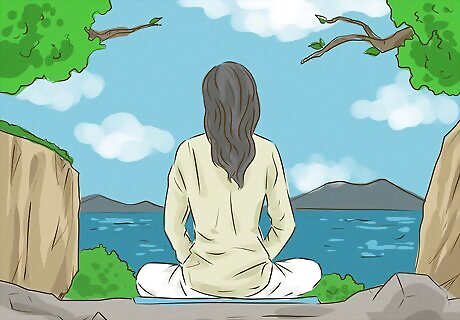
Choose a more comfortable environment. Temperature, sounds, and smells can make it difficult to relax and focus. Find a spot that is neither too hot or too cold where you can be sure distractions will be minimal. Just as you don't have to be in a particular position to meditate, you also don't have to be in a particular place. Where you are is up to you.
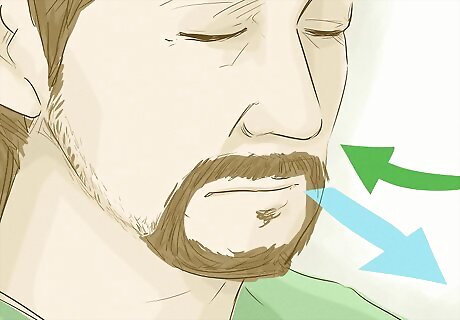
Return to your breath. If you find that your mind continually wanders and you have difficulty focusing, you can always use your breath to refocus. Take a deep breath in through your nostrils, pause, then exhale slowly. Try to make your exhale last the same length of time as your inhale. Count your breaths to give your mind something to keep track of.
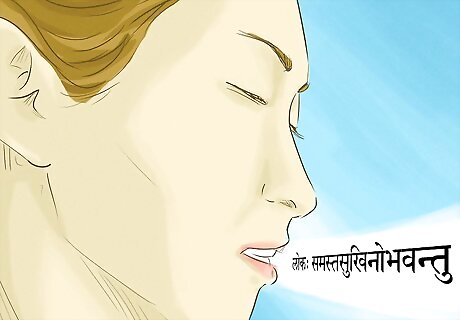
Turn up your energy level. Once you start to get the hang of meditation, you may find you are so relaxed that you start to drift off or even fall asleep. Maintain your focus by adding some action or movement to your practice. For example, you might start chanting a phrase or mantra. When you feel yourself relaxing more deeply and starting to drift off, raise the volume of your voice. If you're lying down or leaning against something to meditate, sit up straight. Check your posture regularly and make sure your spine is straight and your shoulders are back.

















Comments
0 comment